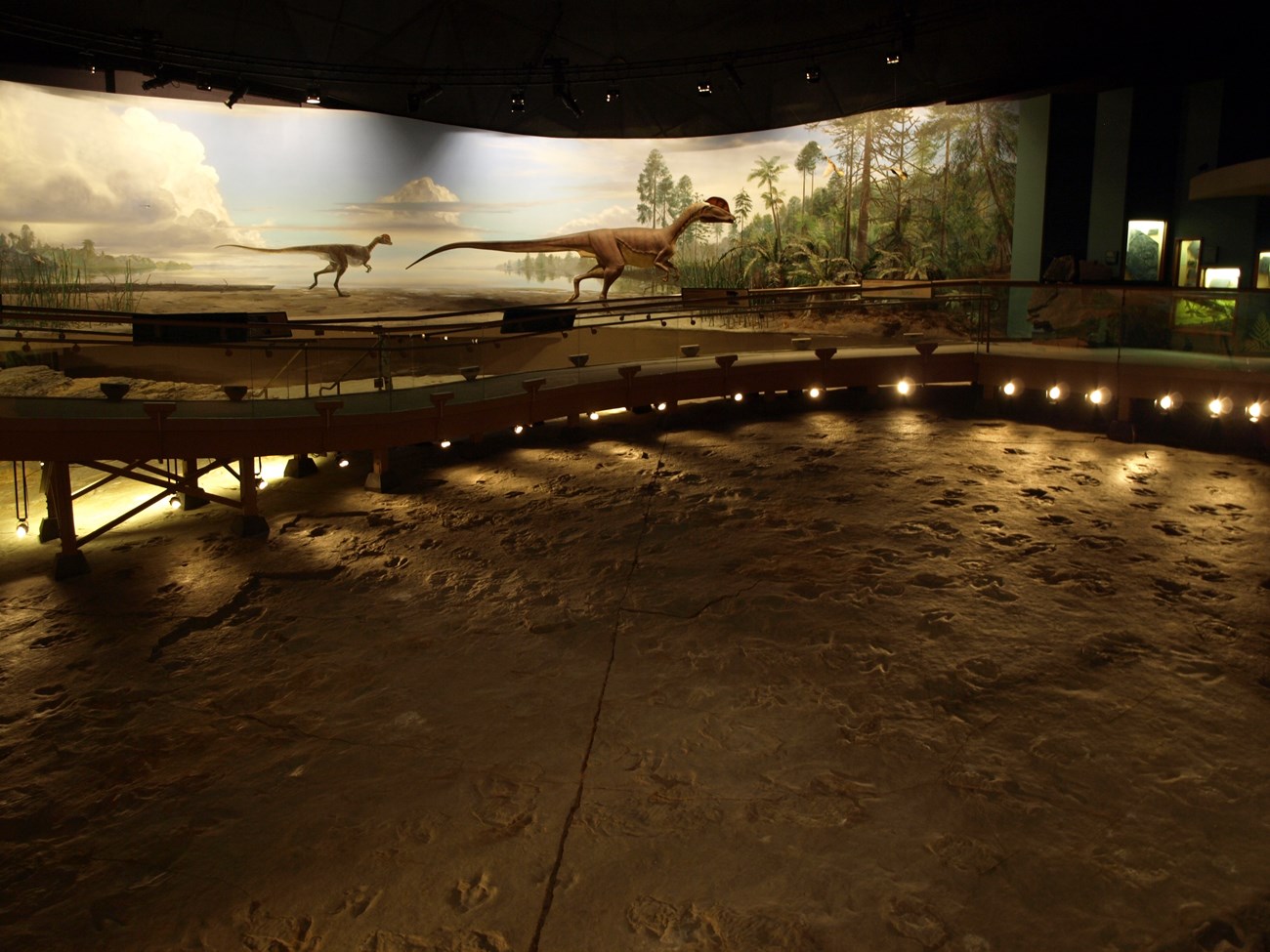
NPS photo.
With the extinctions at the end of the Triassic, the Jurassic fauna was not as unfamiliar. Dinosaurs took over most of the niches for large land animals, particularly large herbivores. Practically all herbivorous land animals more than three feet long in the Jurassic and Cretaceous were dinosaurs. Animals that weren’t dinosaurs filled other niches. There were many small vertebrates, including the first true mammals and lizards, and possibly the first snakes.
Pterosaurs expanded and diversified into many roles; by the end of the Jurassic they were joined in the air by the first birds, which had evolved from small theropod dinosaurs. In rivers, streams, and wetlands, many of the animals would have looked very familiar, including frogs, turtles, and crocodile relatives that looked very similar to their modern cousins. There were some differences, though, including freshwater sharks and rays, and widespread lungfish.
In the seas, ichthyosaurs may have suffered from the Late Triassic extinctions. They never became as large as the giant Triassic shonisaurids, reaching as much as 50 feet long. Other marine reptiles flourished in these post-extinction seas. Plesiosaurs diversified into long-necked small-headed groups and short-necked big-headed groups. A group of crocodile relatives, the thallatosuchians, also invaded the seas in the Jurassic. Coral reefs were present, built by modern scleractinian corals that evolved after the Permian extinction wiped out the reef-builders of the Paleozoic. The seas were also full of squid-like animals that are now extinct, such as ammonoids (usually featuring coiled chambered shells) and belemnites (known mostly from internal bullet-shaped “guards” that supported the body).
Site Index and Credits
Age of Dinosaurs (2021)
Text by Justin Tweet (AGI). Contributors: Vincent Santucci (GRD), Adam Marsh (PEFO), ReBecca Hunt-Foster (DINO), Don Corrick (BIBE). Project Lead / Web Development, Jim Wood (GRD).
References
-
Tweet, J.S. and V.L. Santucci. 2018. An Inventory of Non-Avian Dinosaurs from National Park Service Areas. in Lucas, S.G. and Sullivan, R.M., (eds.), Fossil Record 6. New Mexico Museum of Natural History and Science Bulletin 79: 703-730. https://irma.nps.gov/DataStore/Reference/Profile/2257153
-
Santucci, V.L., A. Marsh, W. Parker, D. Chure, and D. Corrick, 2018. “Age of Reptiles”: Uncovering the Mesozoic Fossil Record in three Intermountain national parks. IMR Crossroads. Spring 2018, p. 4-11. https://irma.nps.gov/DataStore/Reference/Profile/2253529
Last updated: July 8, 2022
